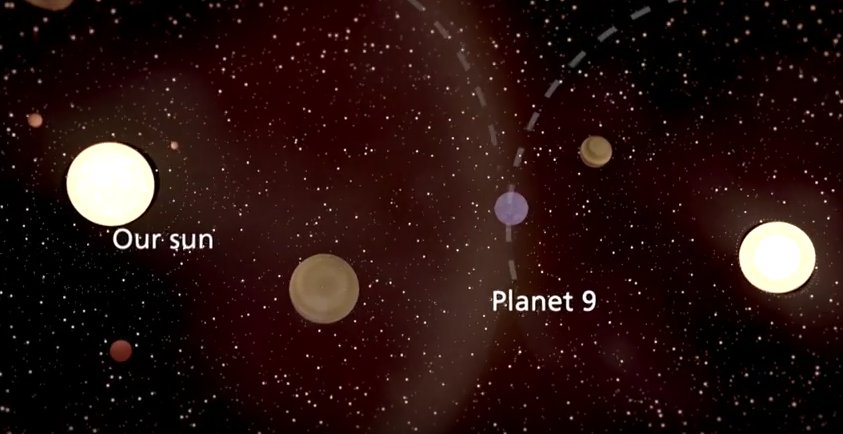
There may be an alien planet lurking within Earth's own solar system.
If the hypothetical Planet Nine does indeed exist, the sun probably ripped the world away from another star long ago, a new study suggests.
"It is almost ironic that while astronomers often find exoplanets hundreds of light-years away in other solar systems, there's probably one hiding in our own backyard," study lead author Alexander Mustill, an astronomer at Lund University in Sweden, said in a statement. [The Evidence for Planet Nine in Pictures]
Earlier this year, astronomers Konstantin Batygin and Mike Brown, both of the California Institute of Technology in Pasadena, announced the possible existence of Planet Nine, a world perhaps 10 times as massive as Earth that's thought to lie in the outer solar system, far beyond Pluto's orbit.
Nobody has seen Planet Nine; Batygin and Brown inferred its existence from the odd orbits of a half-dozen small bodies in the frigid zone beyond Neptune known as the Kuiper Belt.
Some scientists around the world are looking for Planet Nine through a variety of telescopes, while others are trying to figure out where it came from (if the planet does indeed exist).
Some researchers think Planet Nine probably formed within the solar system. The world coalesced closer to the sun than it currently lies and was booted to the far outer reaches by some kind of gravitational interaction, the idea goes.
Get the Space.com Newsletter
Breaking space news, the latest updates on rocket launches, skywatching events and more!
But the new study, which reports the results of computer modeling work, supports a more exotic origin story: Planet Nine was likely stolen from another star about 4.5 billion years ago, when the sun and many other members of its stellar birth cluster were in close proximity to each other, Mustill and his colleagues said.
"When the sun later departed from the stellar cluster in which it was born, Planet Nine was stuck in an orbit around the sun," Mustill said.
More work will be required to firm up this hypothesis, the researchers stressed; after all, the existence of Planet Nine is still an open question. (A long-ago capture would likely have left an "imprint" on some small objects beyond Neptune, so further study of these bodies could shed light on Planet Nine's formation, the researchers wrote.)
But if Mustill and his colleagues are right, Planet Nine could be an even more interesting place than scientists had imagined.
"This is the only exoplanet that we, realistically, would be able to reach using a space probe," Mustill said.
The new study was published online last month in the journal Monthly Notices of the Royal Astronomical Society. You can read an abstract for free here: http://mnrasl.oxfordjournals.org/content/460/1/L109
Follow Mike Wall on Twitter @michaeldwall and Google+. Follow us @Spacedotcom, Facebook or Google+. Originally published on Space.com.
Join our Space Forums to keep talking space on the latest missions, night sky and more! And if you have a news tip, correction or comment, let us know at: community@space.com.

Michael Wall is a Senior Space Writer with Space.com and joined the team in 2010. He primarily covers exoplanets, spaceflight and military space, but has been known to dabble in the space art beat. His book about the search for alien life, "Out There," was published on Nov. 13, 2018. Before becoming a science writer, Michael worked as a herpetologist and wildlife biologist. He has a Ph.D. in evolutionary biology from the University of Sydney, Australia, a bachelor's degree from the University of Arizona, and a graduate certificate in science writing from the University of California, Santa Cruz. To find out what his latest project is, you can follow Michael on Twitter.